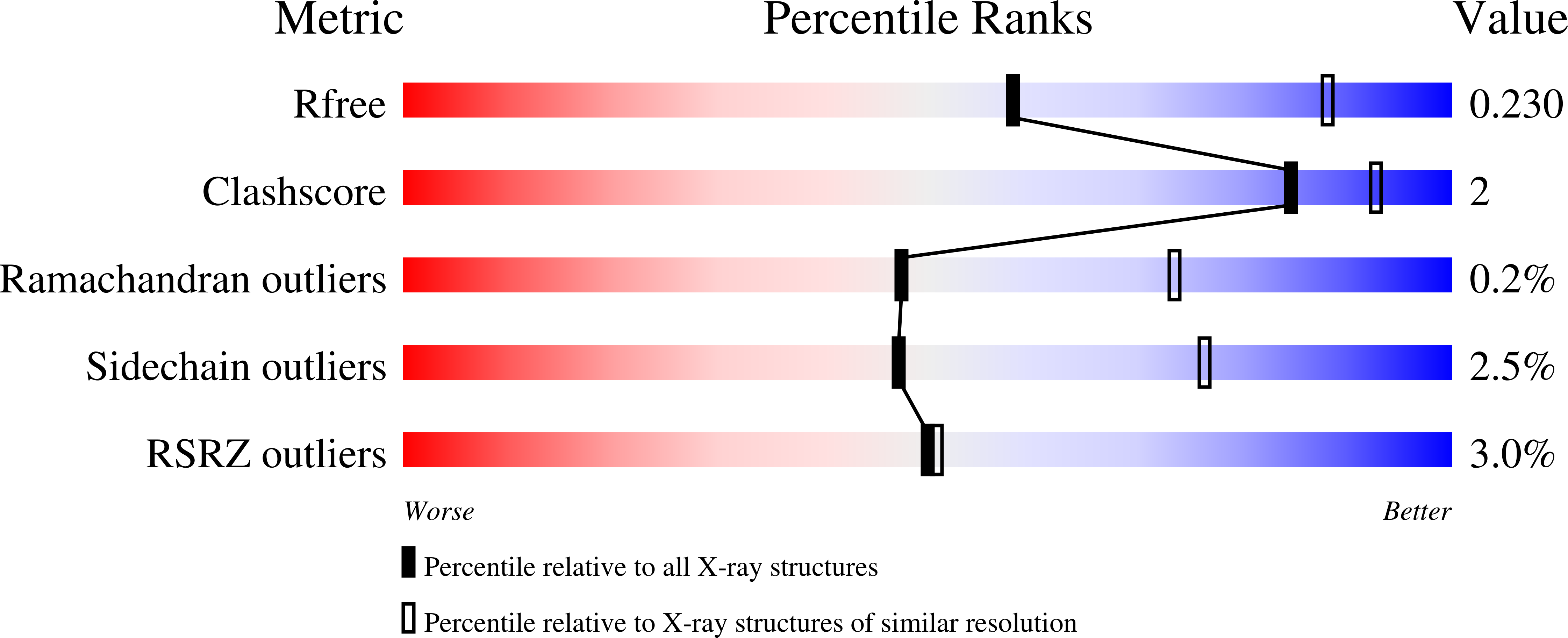Mechanism of Usp7/Hausp Activation by its C- Terminal Ubiquitin-Like Domain and Allosteric Regulation by Gmp-Synthetase
Faesen, A.C., Dirac, A.M.G., Shanmugham, A., Ovaa, H., Perrakis, A., Sixma, T.K.(2011) Mol Cell 44: 147
- PubMed: 21981925
- DOI: https://doi.org/10.1016/j.molcel.2011.06.034
- Primary Citation of Related Structures:
2YLM - PubMed Abstract:
The ubiquitin-specific protease USP7/HAUSP regulates p53 and MDM2 levels, and cellular localization of FOXO4 and PTEN, and hence is critically important for their role in cellular processes. Here we show how the 64 kDa C-terminal region of USP7 can positively regulate deubiquitinating activity. We present the crystal structure of this USP7/HAUSP ubiquitin-like domain (HUBL) comprised of five ubiquitin-like (Ubl) domains organized in 2-1-2 Ubl units. The last di-Ubl unit, HUBL-45, is sufficient to activate USP7, through binding to a "switching" loop in the catalytic domain, which promotes ubiquitin binding and increases activity 100-fold. This activation can be enhanced allosterically by the metabolic enzyme GMPS. It binds to the first three Ubl domains (HUBL-123) and hyperactivates USP7 by stabilization of the HUBL-45-dependent active state.
Organizational Affiliation:
Division of Biochemistry and Center for Biomedical Genetics, The Netherlands Cancer Institute, Plesmanlaan 121, 1066 CX Amsterdam, The Netherlands.















